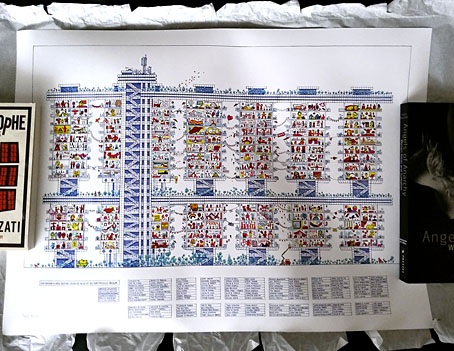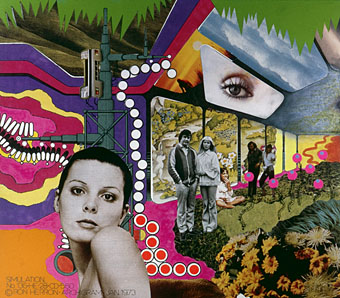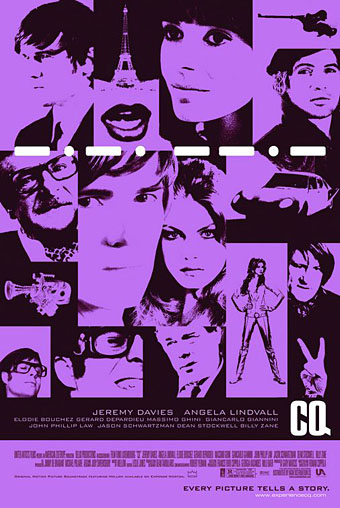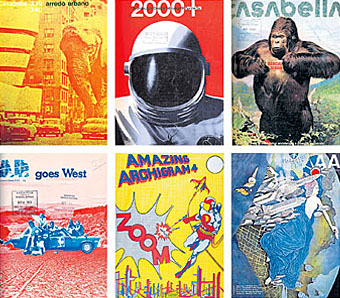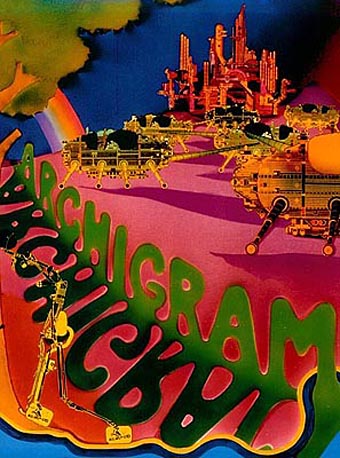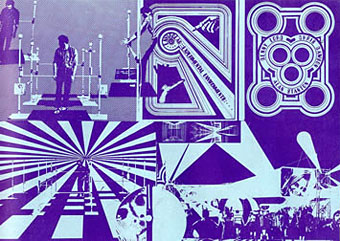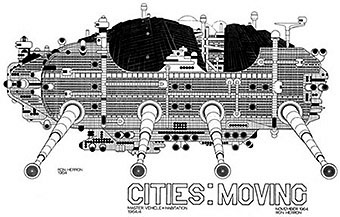The post this week included a poster print by Toby Melville-Brown, an artistic response to the lockdown of April and May. Toby has a colourful graphic style that favours architectural views in the mode of Archigram and other futurists, past and present; at the end of February I featured one of his invented book covers (below) in a weekend post. The title of the cover—Notes from a Troubled Rock—seemed darkly humorous at a time of political turmoil and a growing pandemic. Four months on it reads like a summary of 2020.
The lockdown poster, Life Indoors: A Cross-Section, is more positive, a cutaway elevation of a high-rise block, with each apartment showing the response of a real person or group of people to the viral situation. To fill out the rooms Toby sent an email to 175 households asking for a photographic reflection of lockdown life. I’m in one of the rooms but if you want to know where you’ll have to buy a copy of the poster which is available here. All profits go to Refuge, a charity supporting those at risk from domestic violence. When I first moved to Manchester I spent four years in a Brutalist flatblock that would have had JG Ballard’s wealthy high-rise denizens fleeing for the suburbs. Toby’s elevation looks like a better place to be.
(And I’ve just been informed that the poster sale will end at midnight [UK time] on Friday 12th June.)

